Whether you’re a seasoned gardener or a first-time tomato planter, planting tomatoes in California can be an exciting and rewarding experience. As with any gardening task though, getting started can be tricky— especially if you aren’t sure when to plant the seeds! Knowing how to plan your garden is essential for successful harvesting, and timing is key. From best practices on when to sow those precious little vegetable seeds to understanding the year’s growing seasons, this blog post will explore the topic of when to plant tomatoes in California. Keep reading as we take you through every step of planning an ideal harvest season that promises delicious results!
What are the Climate Features of California?
California is a land of diverse climates, from the mild Mediterranean climate along the coast to cold winters in the mountain regions. The climate in California is heavily influenced by two major ocean currents, El Nino and La Nina. These changes can cause significant shifts in temperature and rainfall patterns throughout the state. [1]
The coastal areas of California tend to have mild temperatures year round, with warm summers and cool winters. Inland regions of California experience greater temperature extremes than the coast, typically due to their proximity to mountains and deserts. The Central Valley of California experiences hot, dry summers and cold winters, while the mountainous areas have snowfall in winter and mild temperatures in summer.
California also experiences significant differences in rainfall depending on location. Coastal areas typically receive more rainfall than inland regions, while the Sierra Nevada and northern California mountains are wetter on average. Rainfall is generally highest in the winter months and lowest in summer at all locations throughout the state.
Climate change is another important factor that affects the climate of California. Rising temperatures caused by global warming have led to an increase in extreme weather events, such as droughts and heatwaves. Climate change also increases the risk of wildfire, as drier conditions lead to an increase in fuel for fires. [2]
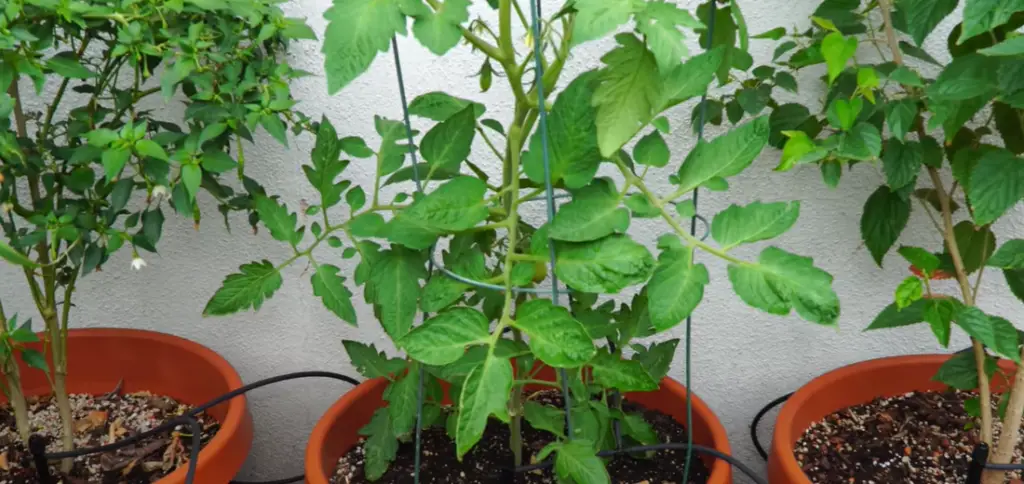
Which Tomato Varieties are the Most Delicious?
Tomatoes come in a huge variety of shapes, sizes, and flavors. From beefsteak to cherry tomatoes, there are a myriad of choices available when it comes to deciding which type is the most delicious. The flavor of any given tomato will depend on its ripeness, cultivation method, and growing conditions. However, some varieties tend to stand out as being particularly flavorful. [3]
Brandywine Tomatoes
Brandywine tomatoes are a popular heirloom variety that has been around since the 1800s. They have a robust, sweet flavor and are generally large in size – up to two inches across! Brandywines often have an intense tomato flavor and are commonly used for homemade sauces, salsas, and salads.
San Marzano Tomatoes
San Marzano tomatoes are a popular Italian variety that is often used in sauces. They grow on tall vines and have a distinctively sweet, almost herbal flavor. San Marzano tomatoes tend to be meatier than other varieties and have fewer seeds.
Black Krim Tomatoes
Black Krim tomatoes are an heirloom variety that originated in the Crimea region of Russia. They have a deep, smoky flavor and can range from dark red to almost black in color. Black Krim tomatoes are perfect for adding a unique twist to salads and sandwiches.
Sungold Tomatoes
Sungold tomatoes are small but mighty! They have an incredibly sweet taste that is often likened to candy. Sungolds are usually bright orange in color and can be eaten fresh or cooked into sauces and salsas.
Yellow Pear Tomatoes
Yellow pear tomatoes are a classic heirloom variety that have been around for centuries. They have a mild, sweet flavor and come in a unique teardrop shape. These small tomatoes can be eaten as is or used to add color and flavor to salads and sandwiches.
Gardener’s Delight Tomatoes
Gardener’s delight tomatoes are an old-fashioned variety that is perfect for the home gardener. They have a refreshingly sweet taste and grow in small clusters on the vine. These tomatoes can be eaten fresh or cooked into sauces and soups.
Green Zebra Tomatoes
Green zebra tomatoes add a unique flavor to any dish. They have a tart, almost citrusy flavor and come in shades of yellow-green and deep green. Green zebra tomatoes are commonly eaten raw or used to add a unique twist to salads and sandwiches.
Cherry Tomatoes
Cherry tomatoes are the perfect snack food! They have a sweet, juicy taste that is often likened to candy. These small tomatoes can be eaten as is, cooked into sauces and salsas, or even used to make homemade ketchup.

Mortgage Lifter Tomatoes
Mortgage lifter tomatoes are a large heirloom variety that originated in the 1930s. They have an intense tomato flavor and are perfect for slicing into salads or sandwiches. Mortgage lifters are also great for making homemade sauces and salsas.
Big Beef Tomatoes
Big beef tomatoes are a classic variety that is perfect for sandwiches or burgers. They have a thick, meaty texture and an intense flavor. These large tomatoes can be eaten fresh or cooked into sauces or soups. [4]
How to Plant Tomatoes?
Spot Selection
Choose a sunny spot with good drainage for your tomato plants. Tomatoes need at least 8 hours of direct sunlight per day to produce well, so choose an area that gets plenty of sun. Make sure the soil is not too wet or soggy — if you have heavy clay soil it may be best to plant in raised beds or containers. [5]
Soil Preparation
Prepare the soil for planting by digging in plenty of organic matter such as well-rotted compost, aged manure or leaf mold. Tomatoes prefer a slightly acidic soil with a pH range of 6.0 to 6.8 — you can test your soil’s pH and then add lime if necessary to raise it.
Planting
It’s best to plant tomatoes in the ground when all danger of frost has passed and the soil temperature is at least 60F. Dig a hole slightly larger than the root ball, then place your tomato plant into the hole. Backfill with soil, firming it around the stem as you go. Water thoroughly after planting and mulch with a 2-3″ layer of straw or grass clippings.
Care and Feeding
Water tomatoes deeply at least once a week (more in dry weather) and fertilize every two weeks with an organic fertilizer such as fish emulsion or compost tea. If your plants start to get top-heavy, use stakes or cages for support. Keep the area free of weeds, as they can compete with tomato plants for nutrients and water.
Harvesting
Tomatoes are usually ready to harvest when they turn red or yellow (depending on the variety). You can pick them by hand or use pruning shears if you can’t reach them easily. Store tomatoes at room temperature out of direct sunlight, and enjoy fresh from the vine! [6]

When to Plant Tomatoes in California?
Tomatoes are an extremely popular crop to plant in the great state of California. In order to get the best results and maximize yields, it is important to know when the best time of year is for planting tomatoes in your region. Generally, tomatoes can be planted from March through July in most parts of California with ideal conditions existing between April and June. If you’re located in a cooler part of the state, such as the coastal regions, you may be able to extend your planting season even further.
When selecting tomato seedlings, it is important to read the label and select those that are disease-resistant and adapted to your area. It is also beneficial to look for varieties that require fewer hours of sunlight during their growing cycle. This will help to reduce the amount of water you need to give them on a daily basis, as well as which pests and diseases they may be susceptible to. [7]
How to Harvest Tomatoes?
Harvesting tomatoes is a simple process. The best way to do this:
- Inspect the tomato plants and look for tomatoes that are bright red, plump, and have smooth skin.
- Gently lift the tomato from the vine by pressing your thumb against the stem just above where it attaches to the vine. Do not pull or tug forcefully – you may damage the fruit or pull up part of the plant.
- Place harvested tomatoes in a basket or container and bring them inside.
- Enjoy your fresh, home-grown tomatoes!
Tomatoes can also be harvested at different stages of ripeness. If you want to enjoy some green tomatoes with your harvest, check the underside of the tomato for a light yellow-green color. This indicates that the fruit is ripe enough to pick and still has its tart flavor. Conversely, if you want a sweeter tomato, choose fruits that are completely red and slightly soft when touched.
Additionally, many gardeners prefer to pick tomatoes off the vine rather than wait for them to drop off naturally. This ensures that the tomatoes remain in prime condition and are not damaged by contact with the ground. It also helps prevent diseases or pests from spreading to other plants. [8]
How to Store Tomatoes?
Storing tomatoes correctly is key to preserving their flavor and texture. It’s important to take the time to properly store them so you can enjoy delicious, ripe tomatoes whenever you want.
One of the most important tips for storing tomatoes is to never refrigerate them. Tomatoes stored in the refrigerator will quickly become mealy and lose their flavor. This rule applies even to tomatoes that have already been cut. For the best flavor, you should store cut tomatoes at room temperature in a sealed container.
When storing uncut tomatoes, keep them on the countertop or in a cool dark place such as a pantry. Tomatoes should never be stored in direct sunlight because they will become too ripe too quickly and lose flavor.
Tomatoes can be frozen for longer storage. To do this, you’ll need to blanch and peel the tomatoes first. Then, cut into slices or cubes and freeze in airtight bags or containers. Frozen tomatoes are great for adding to soups and stews throughout the winter months.
Maintaining optimal humidity is also important when storing tomatoes. Tomatoes should be stored in a place with higher humidity, such as a vegetable crisper drawer in the refrigerator. This will help keep them from drying out and losing their flavor. [9]
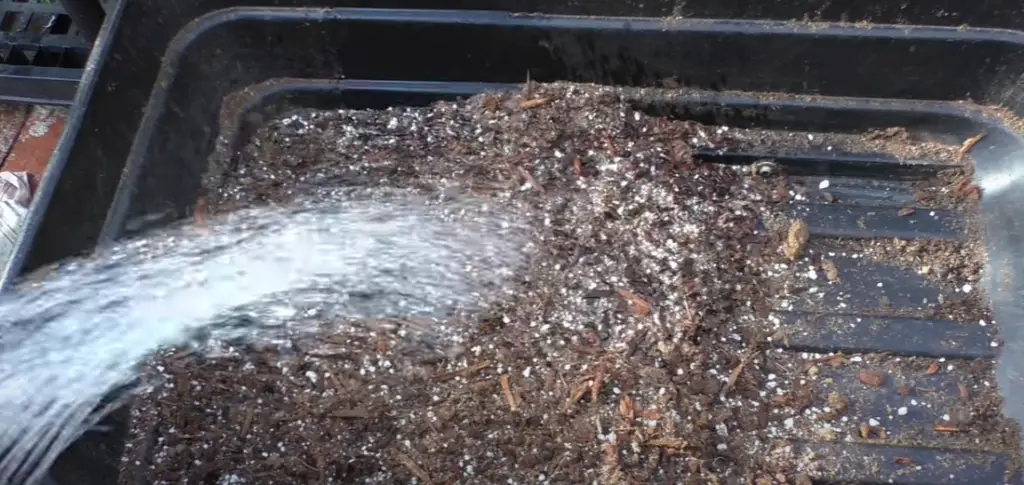
What Disease Can Tomatoes Have?
Tomatoes can be affected by a number of diseases, including:
- Bacterial Spot: This disease is caused by the bacterial pathogen Xanthomonas campestris and results in small, circular spots on leaves, stems and fruit. The spots may grow together to form large lesions if left untreated.
- Early Blight: Caused by the fungus Alternaria solani, early blight is a common tomato disease. Symptoms include spotting and wilting of leaves, dark lesions on stems and brown spots on tomatoes.
- Fusarium Wilt: This devastating disease is caused by the fungus Fusarium oxysporum and attacks the vascular system of the plant, eventually cutting off its water and nutrient supply. Symptoms include yellowing of leaves and wilting of the plant, eventually leading to death.
- Late Blight: Caused by the fungus Phytophthora infestans, late blight is a serious disease that can lead to complete crop loss in just a few days if left untreated. Symptoms include dark lesions on stems and fruit and white spots on leaves.
- Septoria Leaf Spot: This fungal disease is caused by the pathogen Septoria lycopersici and results in small, round spots on leaves. The spots may grow together to form large lesions if left untreated.
To prevent disease, it is important to practice good sanitation and crop rotation. Planting disease-resistant varieties can also help reduce the risk of infection. In addition, tomatoes should be harvested when ripe for the best flavor and texture. Proper storage techniques such as refrigeration or canning can help extend shelf life and quality of the fruit. Finally, proper pruning and fertilizing during the growing season can help ensure healthy plants and a successful harvest. [10]
FAQs
How late can you plant tomatoes in California?
Planting tomatoes in California can generally begin as late as March and continue until June, depending on the variety. Planting during the coldest months of winter is not recommended due to frost risk. Additionally, crops planted later in the season may experience delayed growth or a reduced yield. It is important to plan ahead for when you will plant your tomatoes and make sure the temperatures are warm enough for the crop to grow.
What is the best month to plant tomatoes?
When it comes to planting tomatoes, timing is everything. The best time of the year to plant tomatoes depends on your particular region and climate. In many areas, early spring is a good time for tomato planting as long as the soil has had enough time to warm up. The ideal temperature range for growing tomatoes is between 65 and 85 degrees Fahrenheit (18-29°C). If temperatures dip too low, tomato plants may struggle to produce high-yielding harvests.
If you’re in a region with hot summers, planting in late spring or early summer is best as the soil will be warm enough for optimal growth and development. However, in regions with cooler summers, tomatoes should be planted toward the end of May or even into June to ensure they have enough warm weather for optimal growth.
It is also important to consider the length of the growing season in your area when it comes to planting tomatoes. If you live in a region with a shorter growing season, you may want to get an early start and plant your tomatoes in late winter or very early spring. On the other hand, if you have a longer growing season, you may want to wait and plant your tomatoes in mid-spring or early summer.
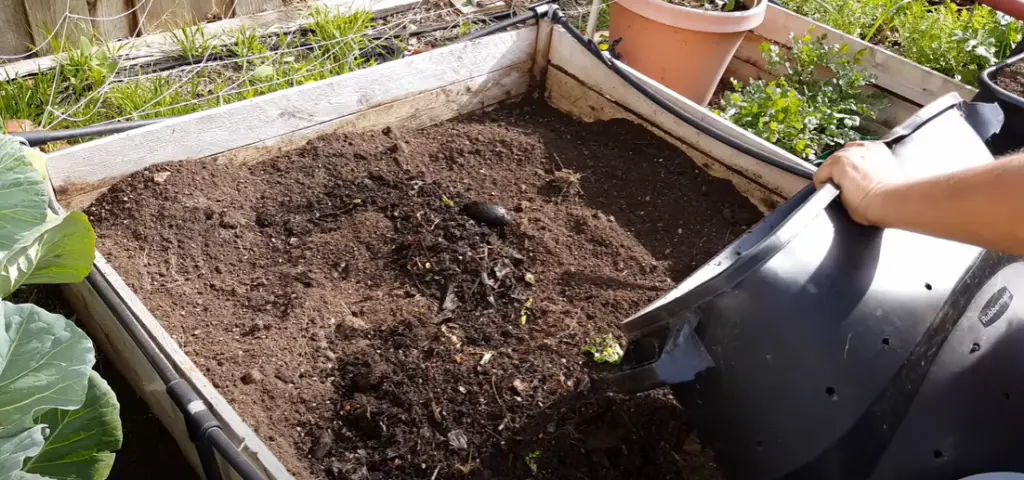
How long is tomato season in California?
Tomato season is one of the most popular times of the year for California growers, and usually runs from May through November. During this time, tomatoes are in peak condition and can be found at farmers markets, supermarkets, and other retailers throughout the state. Tomatoes are a versatile crop that can be used in many recipes or eaten raw as a snack. With their sweet flavor, bright color, and juicy texture, California tomatoes are some of the best in the world.
Tomato season is a great time to try out new recipes or experiment with different ways to enjoy this delicious fruit. Whether you’re grilling them on the barbecue, adding them to salads and sandwiches, or making your own salsa, there are endless possibilities for enjoying California tomatoes.
Tomato season is also a great time to explore the different varieties available in California. Heirloom tomatoes come in a variety of colors, shapes, and sizes and are prized for their unique flavor and texture. Cherry tomatoes are perfect for snacking, while beefsteak varieties make delicious sandwiches or burgers.
How long do tomatoes take to grow?
Tomatoes typically take between 75 and 90 days to grow from a seedling or planted tomato plant to maturity. The time it takes for tomatoes to reach maturity will depend on the variety of tomato as well as environmental conditions such as temperature, soil type, and moisture. In general, most cherry-sized tomatoes take about 65 days while larger varieties like beefsteak may take closer to 90 days.
The best way to determine when tomatoes are ready for harvest is by checking the color of the tomato skin. If it starts to turn from green to red, orange or yellow depending on the variety, then they can be harvested and eaten! Additionally, you can test if a tomato is ripe by gently squeezing it. It should give slightly and be firm, not spongy.
Useful Video: Unlocking Tomato Mastery: Top 10 Secrets for Exceptional Tomato Growth
The Bottom Line
Harvesting potatoes may not seem like rocket science, but the timing of it is important. Fall is the best time to harvest potatoes, and it’s important to come prepared with a shovel and basket. After locating your potato bed, you’ll want to rake carefully so that you don’t hurt any of the potatoes. Then, you can go ahead and dig them up. Remember to be gentle when doing this so that you can get as much of the potato as possible without damaging them! Potatoes are a tasty and versatile addition to any kitchen, and harvesting them at home can be a very rewarding experience. With enough research and knowledge about planting cycle and harvest times for potatoes, you’ll be well on your way towards being successful in harvesting them yourself! Happy harvesting!
References:
- https://www.britannica.com/place/California-state/People
- https://www.worldtravelguide.net/guides/north-america/united-states-of-america/california/weather-climate-geography/
- https://balconygardenweb.com/best-tasting-tomatoes/
- https://tomatogeek.com/best-tasting-tomato-varieties/
- https://www.rhs.org.uk/vegetables/tomatoes/grow-your-own
- https://www.thespruce.com/top-tomato-growing-tips-1402587
- https://www.floridayards.org/when-to-plant-tomatoes-in-california/
- https://www.gardentech.com/blog/garden-and-lawn-protection/easy-steps-to-grow-your-own-tomatoes
- https://www.seriouseats.com/why-you-should-refrigerate-tomatoes
- https://njaes.rutgers.edu/fs547/





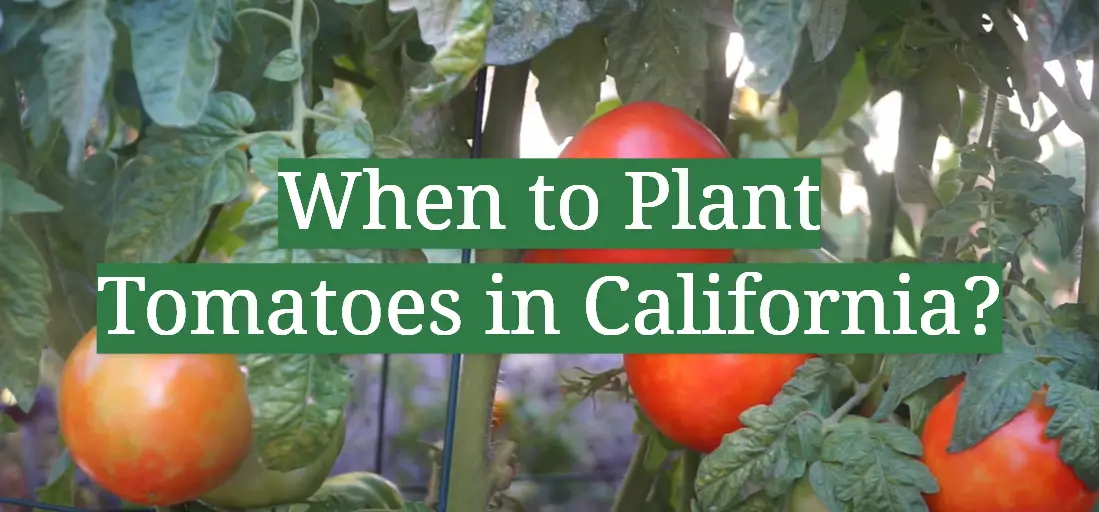


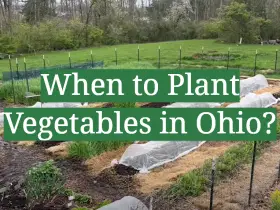
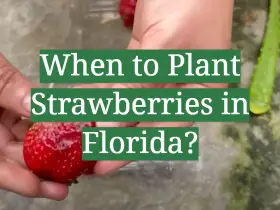
Leave a Reply
View Comments